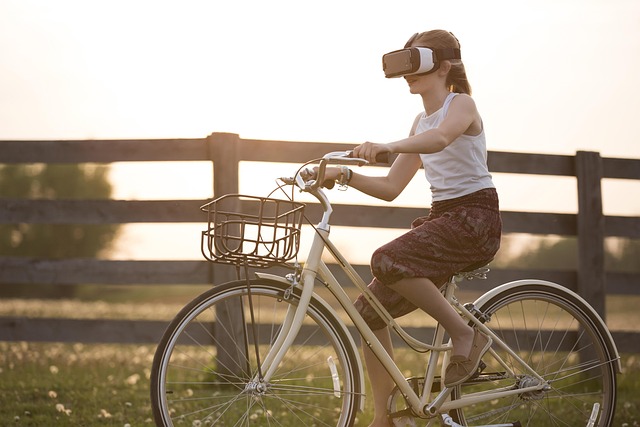Introduction: A New Kind of Engagement
Augmented Reality, or AR, gets tossed around a lot—but it’s more than floating filters or cartoon dog ears. At its core, AR overlays digital elements onto the real world through a screen or lens, blending physical space with digital interaction. It’s not about escaping reality; it’s about enhancing it.
For years, AR felt like tech for tech’s sake—fun, maybe, but not essential. That’s changed. Now it’s being used to deepen how people interact with stories, news, and entertainment. It’s media that reacts, adjusts, and sometimes even talks back. And audiences are starting to expect that kind of depth.
The gimmick phase is over. Consumers want content they can control, explore, and experience their own way. AR’s biggest shift isn’t technical—it’s psychological. It’s moving media from something you watch to something you do. Media platforms that don’t adapt to this shift are setting themselves up to get left behind.
Media Meets AR: The Basics
Traditional media has always been a one-way street. You watch. You listen. You read. But now, that model is cracking. Augmented Reality (AR) is pulling audiences out of the passive role and handing them the wheel. Instead of just consuming content, people are stepping inside it. Think less couch potato, more co-pilot.
AR turns static screens into interactive spaces. A newsreader’s data chart isn’t just on screen—it hovers in your space. A music video syncs to your room layout. Storylines break the frame and follow you through your day. This isn’t style over substance—it’s a shift in how we experience media at a base level.
Phones are the gateway drug. They’re already loaded with cameras, sensors, and apps built to serve up AR. But smart glasses and wearables are closing in fast, making the barrier between digital and physical even thinner. With Apple, Meta, and Samsung all releasing mixed reality gear, creators and media platforms are racing to catch up and stay relevant.
AR doesn’t replace traditional storytelling. It upgrades it. That means producers who learn to layer immersive elements on top of old formats win—and everyone else fights for leftovers.
Real-World Examples of AR in Action
Let’s get concrete. AR is already reshaping how we engage with media—as in, it’s not just hype anymore.
In news, headlines are turning into entry points. Readers can launch 3D visualizations of major events, zoom around geographic hotspots, or even overlay timelines on their coffee tables. It’s not about replacing text, but adding a layer of spatial thinking that sticks. News is finally using AR like a tool, not a gimmick.
In entertainment, studios are building AR extensions for some of their biggest IP. Think scavenger hunts through digital replicas of fictional worlds, or character cameos showing up in your living room to preview the next episode. Between launches, fans stay plugged in—and producers get a touchpoint that feels more personal than a trailer.
Sports and live events? AR’s boosting the experience there too. Viewers can toggle enhanced stats during a livestream, spin the camera to view a game-winning shot from multiple angles, or get player heatmaps mid-match. For fans, this isn’t just second-screen viewing—it’s first-screen immersion.
Across the board, AR is turning media into something you don’t just watch, but move through and manipulate. The mediums are expanding. So are the expectations.
Advertising Gets Smarter (and More Personal)
AR is stepping into advertising with more than flair—it’s bringing function. The biggest win? Try-before-you-buy experiences. Brands are letting users place a couch in their living room through the camera or see how a pair of sunglasses fits their face instantly. It’s not a gimmick. It’s reducing returns, boosting conversion rates, and making purchase decisions faster and more informed.
Then there’s geo-based AR—the campaigns that meet you where you are. Walk past a store and your phone shows you what’s on sale inside, layered right over your screen. Or maybe you’re in a stadium and get exclusive AR extras just for being there. The difference between cool and creepy? It’s all in how transparent and useful the interaction is.
But here’s the kicker: AR isn’t just flashy front-end dressing. It’s also a data goldmine. Every interaction—where someone lingers, what they rotate, tap, or discard—becomes insight. Media platforms are mining this to fine-tune content, ads, and user experiences. Not just knowing what people watch, but how they physically engage with it.
For those still writing off AR-enabled advertising as a fad, reality is already layered. And it’s clickable.
Audience Behavior Is Changing
Here’s what the numbers and instincts agree on: when content reacts to the viewer, they stick around. Augmented Reality strips away the old wall between audience and screen—people aren’t just consuming anymore, they’re interacting. And when you’re a part of the moment, you’re more likely to remember it.
That interactive layer drives emotional connection too. It’s one thing to watch a documentary about ocean conservation. It’s another to point your phone at your living room floor and see a 3D coral reef being bleached in real-time at your feet. The second version? It hits harder. It lingers longer.
Younger audiences don’t just appreciate this level of engagement—they expect it. For Gen Z and Gen Alpha, the line between digital and physical has been blurry since day one. AR isn’t a bonus feature; it’s part of the default experience. If media creators want to tap into that crowd, they need to meet them where they already live: in blended, responsive environments.
Challenges Media Platforms Are Facing
AR sounds futuristic—and it is—but it’s also expensive. Building interactive layers over real-world environments takes serious production power. From custom 3D assets to precision tracking software, the bills climb fast, and not every team has the expertise (or the time) to deliver flawless results. For small outlets or solo creators, this isn’t a light lift—it’s a mountain.
Then there’s privacy. AR tech collects spatial data by nature: where you move, what you point your device at, even physical surroundings in your room. This opens a whole new layer of concerns about data usage and consent. Media companies are walking a tightrope between innovation and intrusion.
And let’s be honest—not everyone’s ready. In many parts of the world, the hardware just isn’t there yet. Devices capable of running smooth AR experiences are still concentrated in major markets, and mainstream adoption lags behind the hype. It’s not stopping progress, but it’s definitely slowing it down. If AR is the future, there are still plenty of speed bumps in the way.
What This Means for the Future of Streaming
Streaming isn’t just about pressing play anymore. As AR tech matures, platforms are heading toward mixed experiences that combine watching and interacting in real-time. Think live concerts where your phone adds behind-the-scenes footage with a tilt of the screen. Or watching a cooking show where your kitchen counter becomes the prep table through AR overlays. This isn’t sci-fi—it’s where we’re headed.
Personalization is also entering a new phase. It’s not just about recommending your next binge. It’s about tailoring the actual media experience to your space, mood, and movement. Platforms will soon compete not just on content libraries, but on how smartly they can adapt that content to your environment. If Netflix knows you’re watching at home on Saturday night, AR could enhance that experience to feel more like an event than a solo scroll.
The bigger picture? Viewership habits will shift—again. Passive couch time turns into semi-active engagement. Subscription value starts coming from not just what you can watch, but how you can watch it. The more immersive and responsive the experience, the more likely people are to stick around, come back, and even pay more.
For a broader look at how these changes stack up against old-school models, see Streaming Services vs. Cable: The Battle for Viewership.
Conclusion: Forced Evolution
Augmented Reality isn’t just another shiny toy in the digital toolbox—it’s a foundational change in how people experience content. This isn’t a trend that’ll fade with the next quarterly report. AR changes the relationship between media and viewer. It turns passive scrolling into tactile interaction. It creates presence, not just impressions.
Media providers that tune in early are already seeing results. They’re turning flat stories into immersive environments. They’re embedding interaction inside the content flow, not bolting it on as a gimmick. That’s the future: content that doesn’t just grab attention—it holds it, shapes it, and moves with it.
And no, this isn’t about visual glitz. It’s about utility. Emotional weight. Memorability. Content needs teeth now. AR delivers that—when used with intent. The real winners going forward will be those who can deploy it not for flash, but for frictionless, unforgettable value.




